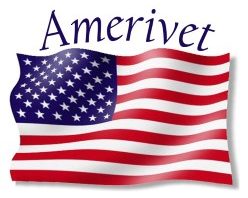Quite often in the welding world, you hear about "Code Welding." What the heck is that? Well, it's simple, and very complicated. It's essentially a documented way of meeting the standards set forth by American Welding Society (AWS), and mandated by the International Building Code, along with other ANSI standards. There are organizations that also develop nationally recognized standards and "best practices" for the code, such as the American Institute of Steel Construction (AISC).
Why do I care about this? It's about quality control, with the emphasis on verifiable QUALITY. Amerivet Services has always provided high quality services. With a smaller team it was always been easy for me to verify that the workmanship is fantastic and meets industry standards. However there wasn't a documented set of procedures to help us prove to the world that we've done things right.
It's easy to say "all welders must be certified" and think it means something. Well yes, it means they passed a test at some time in their life. Does it mean they're doing high quality work TODAY? Definitely not! People just don't work that way. We have good days and bad days. There has to be a way to encourage more good days and weed out the bad days.
Over the last couple of years we've ramped up the documentation and enhanced our relationships with third parties that can help us show that every weld, every fabrication, meets or exceeds the quality standards set by AWS, AISC, and so on. For the customers we have, expectations are high and we have to verify that we're providing high quality product and service 100% of the time.
So how does this work? It's an intensive process of developing a weld procedure for each type of metal, filler metal, weld position, and process. This is called a Weld Procedure Specification (WPS). Then, we actually mock up a simulation, and perform the work in a controlled environment, with amp/volt meters, stop watches, and weld inspectors watching. Absolutely everything gets documented so that we can repeat the process later IF it passes inspection and lab testing. Then the test metal gets sent to the lab, where they cut it, put it under a microscope, bend it, whatever it takes to verify that the process is good. THEN, and ONLY then, can a Procedure Qualification Record (PQR) be created. Once a PQR is developed, then every welder who will be doing the work has to qualify using that WPS on an annual basis.
In the event that this isn't intensive enough, every weld on a project that is done in accordance with code must be inspected according to the requirements of the code. This includes nondestructive tests like magnetic particle, ultrasonic, and x-ray.
So why am I taking Amerivet Services down such an intensive, EXPENSIVE path? It's simple: I want to employ good people, and I want them to show their stuff on the most challenging projects I can find. I want to show the world that we kick butt every day and we can prove it!
We absolutely are a team of high quality problem solvers!
For our parting shot, check out a recent building modification. We built a truck dock, installed a door opening with roll up door, and built an awning to keep people out of the weather while they're unloading trucks!

